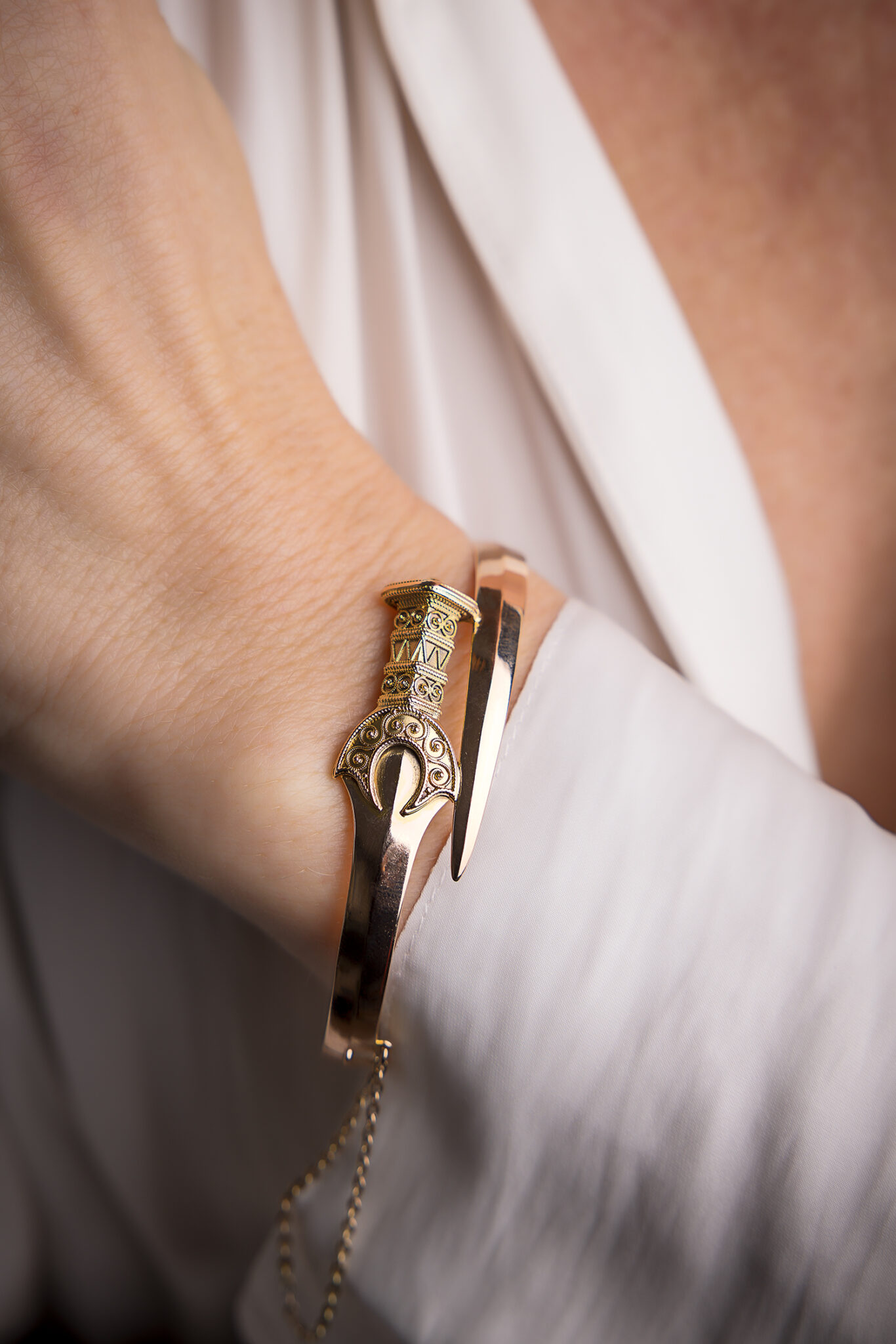In august 1991 The City Museum of Helsinki had an seperate artist exhibition of Otto & Roland Melin – The master goldsmiths. In the printed catalog the bracelet is mentioned as a Bronze Age Sword. The maker unknown at the time but the inspiration is said to be Danish swords from around 1700BCE. A sort of pastiche on the swords depicted in Jens Jacob Asmussen Worsaae´s book “Industrial Arts of Denmark” that came out 1881.
Revival jewelry embodies a long-standing tradition of drawing inspiration from the past – either by copying or reinterpreting ancient motifs. It has been a way for us to wear jewelry pieces that connect us to the rich history of the beginning of civilization. Nineteenth-Century jewelry consisted predominantly of adaptations of earlier jewelry styles. We now know, through historical studies, that this return to the past sprung from a renewed sense of national pride. The revivial movements reflected time periods of national achievement and symbolized all that was great in the history of European civilization. Each country embraced this nostalgia for different reasons.
Two major styles emerged: Gothic (or Medieval) Revival and Renaissance Revival but many more existed like the Eqyptian or the Etruscan.
Danish Gothic Revival also referred to as Victorian Gothic, neo-Gothic bracelet. Made in Copenhagen by C. I. Fleinert in the late 19th century. Interestingly the bracelet also bears Finnish import marks, Otto Roland Mellin, Helsinki. 6 – 16 mm wide. Inner circumference 17 cm. Marked 585 for 14K.
Price: 3795$




















